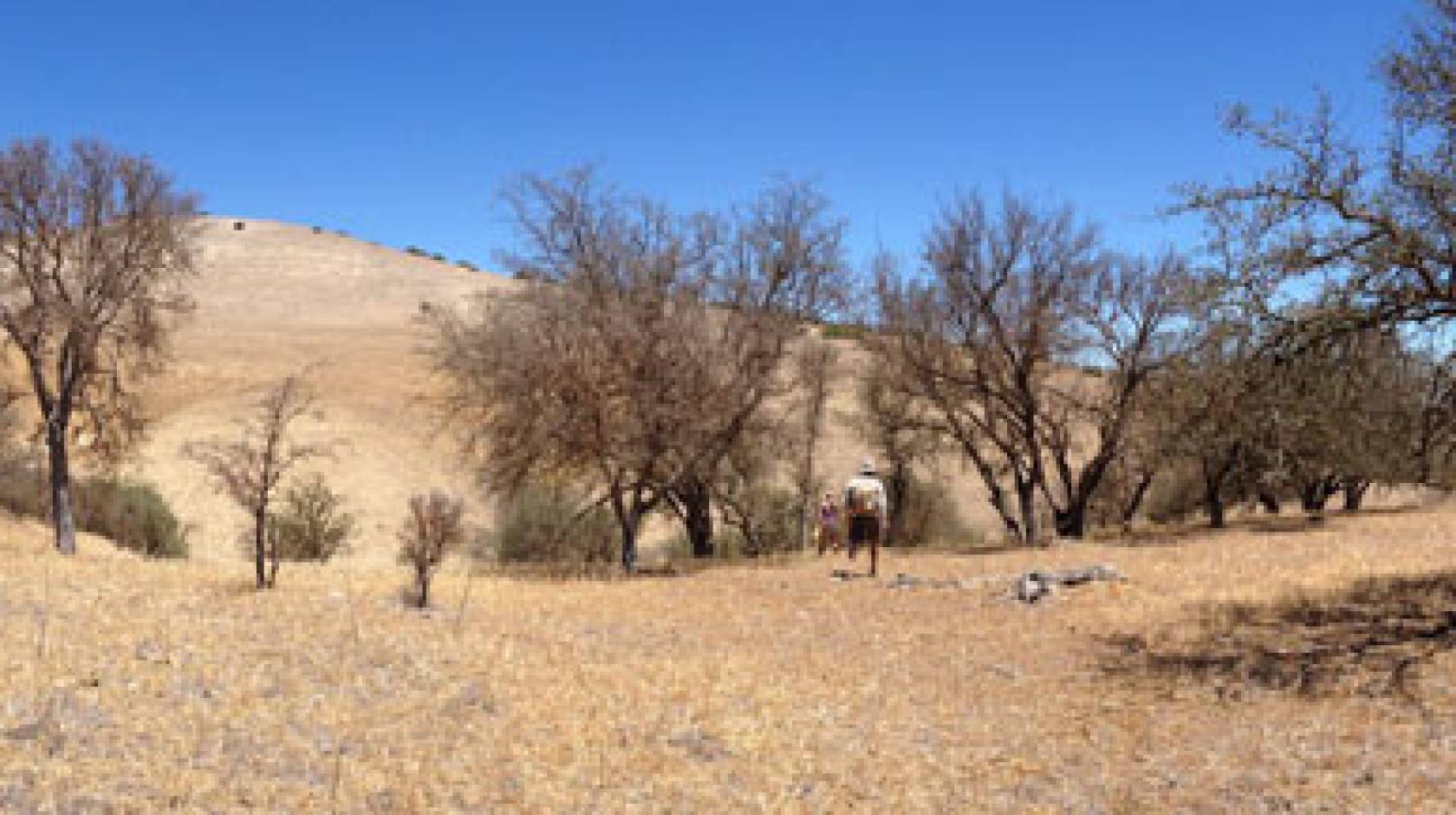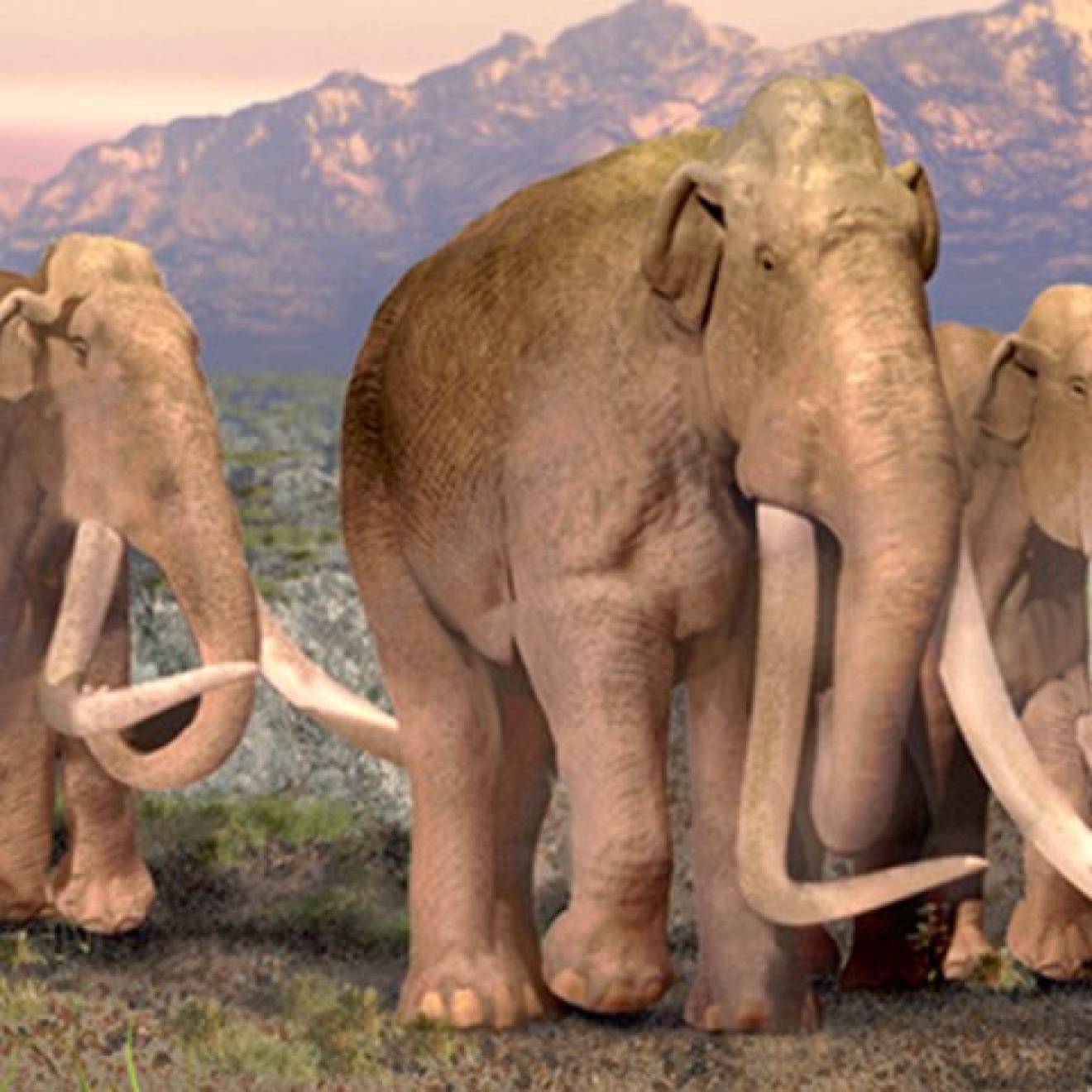Kathleen Wong, UC Natural Reserve System

The most severe drought in living memory did a number on California’s blue oaks. A new study by UC Berkeley researchers shows how even centuries-old trees struggled when landscape water disappeared between 2012 and 2015.
Some showed stress by producing miniature leaves, some by shedding leaves, and some simply died. The study’s findings will help refine our ability to manage water resources in coming decades — a measure critical for conserving the state’s beloved oak woodlands as climate change effects intensify.
“Plants we thought were probably more resilient to the drought, weren’t. We saw them pushed to their limits,” says UC Berkeley professor Todd Dawson, a principal investigator of the study.
The 2012-13 rain year began wet, with several rainstorms early in the season. But by spring, signs began pointing to a monster dry spell. Ocean and atmospheric conditions conspired to ward off storms, limit precipitation and trigger early melting of the snowpack.
“It was clear we were in store for something quite different in terms of a drought than we’d seen in a long, long time,” says Dawson, a plant physiologist.
Observing plants in extremis
Seizing the moment, Dawson teamed up with fellow biology professor David Ackerly and engineering professor Sally Thompson to examine how plants were responding to severe drought across the state.
With a National Science Foundation grant, the researchers studied plants at three sites ranging from central to northern California: Pepperwood Preserve in Sonoma County, the NRS’s Blue Oak Ranch Reserve east of San Jose, and Canyon Ranch in San Luis Obispo County. As it turned out, the sites experienced a range of drought severity. From 2012–2016, Canyon Ranch received just 40 percent of its average rainfall, Blue Oak Ranch around 52 percent and Pepperwood Preserve about 62 percent.

Credit: Image courtesy Todd Dawson.
At each location, the researchers measured a suite of plant characteristics across two years. Taken together, features such as tree canopy bareness (providing leaf area information), water use and water stress can provide a snapshot of plant performance in the same way that temperature, blood pressure and weight readings offer a handy overview of human health.
The scientists already had pre-drought readings at some locations, enabling them to compare plant performance during average and dry times.
“We were measuring the physiological water status of these plants and had never seen readings like these before,” Dawson says.
Stunted leaves
Two species of trees, valley oaks (Quercus lobata) and blue oaks (Quercus douglasii), produced striking responses. The changes were easiest to see in their leaves. The first year of severe drought, the blue oaks at the driest southern site produced freakishly shrunken leaves. Normal blue oak leaves are about the length of a human thumb. At Canyon Ranch, the foliage of the most water-stressed trees was the size of a pinky fingernail.
“We did not expect to see something like that. Not only were they physiologically stressed, but they responded morphologically by making a really puny little leaf,” Dawson says.
With their suite of measurements, the researchers could explain in detail what happened. One method they used was carbon isotope analysis. This approach capitalizes on the principle that plants are picky about the molecules of CO2 they consume. Not all CO2 is the same — some has “light” carbon-12 in it, and some has “heavier” carbon-13. And carbon-12 is faster and easier for plants to use.

Credit: Image courtesy Todd Dawson.
Given a choice, plants prefer to manufacture their sugars and cells out of light carbon. But when water gets scarce, plants close down the pores, or stomata, on their leaves, leaving them only the carbon dioxide already trapped inside their cells. Eventually, the light carbon in this supply gets depleted, forcing the plant to use the heavy version. The more water stressed a plant is, the more heavy carbon turns up in its sugars and cells.
The isotope ratios in a leaf’s sugars “gives us an integrated measure of what the plant did on that particular day,” says Dawson, who helped develop this technique years ago. By contrast, the isotope ratios in leaf cellulose, the scaffolding around which each leaf is built, “tells you what that tree was doing when the leaf was made; during springtime conditions.”
Blue oaks at a disadvantage
As the drought wore on, both valley and blue oaks put more and more heavy carbon into their leaf sugars and cellulose. Blue oaks, however, generally had the heaviest carbon isotope readings, showing they were laboring under more water deficits than valley oaks.
This helps explain why the most water-stressed blue oaks produced such tiny leaves, says Dawson. “When you have your stomata closed, and you can’t fix carbon in photosynthesis, how can you grow a leaf?”

Credit: Image courtesy Todd Dawson.
Scarier yet, “every one of those trees with the tiny leaves is now dead,” says Dawson. This establishes miniscule leaves as an indicator of impending blue oak doom. “When they show a leaf size change, you can say you’re going to lose those plants, they’re not going to be able to come back. It’s too late for those trees.”
Many of the trees that died were big, old behemoths more than 250 years in age. “They’d seen droughts before. But nothing like this,” Dawson says. Tree ring work by other researchers indicates this drought was the most severe to hit California in at least 600 years.
Oaks weren’t alone in their travails. California has accumulated more than 100 million dead trees since 2010.
'The bathtub drained'
An equally frightening story played out underground. California oaks grow roots that can extend 50 to 100 feet down, allowing them to to tap groundwater when surface soils go dry.
In typical water years, steady winter rainfall and winter snowmelt replenishes groundwater supplies. But the severity of the 2012–2015 drought meant aquifers never fully recharged. Well data at the study sites showed groundwater levels dropped past the reach of even the most deep-rooted trees. Additional analyses of the isotopes in water showed showed that trees connected to deep groundwater largely continued to use those sources of water. But other trees, especially blue oaks situated on ridges, got disconnected from their water supplies.
“They were elevated above the groundwater, and then the groundwater receded, and they were stranded,” Dawson says. “The bathtub drained, and that was it; game over.”
Conserving water via canopy clearing

Credit: Image courtesy Todd Dawson.
Valley oaks, by contrast, tend to grow at lower elevations, in deeper soils and closer to groundwater. This buffered valley oaks from the catastrophic losses in their water supplies experienced by many blue oaks.
Yet valley oaks were far from impervious to the drought. Rather than growing tiny leaves, valley oaks dropped their leaves months ahead of schedule.
In oaks, the role of leaves is to conduct photosynthesis and make sugars. But photosynthesis involves losing water through leaf pores. Once drought made leaves a water-losing liability, valley oaks ditched up to 25 percent of their canopy. Dawson and his team have observed the same canopy-reduction response among thirsty giant sequoias in the Sierra Nevada.
Different soils, different drought
While overall more trees died at the drier sites, some trees at arid Canyon Ranch had physiological readings more similar to those at much wetter Pepperwood Preserve.
“That’s a reminder of the importance of the landscape,” Thompson says. “All plants at a given site might experience the same climate, but not all experience the same drought.”
That’s because the underlying geology determines the amount of water available to plants. Trees growing high on hillslopes might have less access to water than trees growing over groundwater that might have accumulated in, for example, sandy aquifers below stream channels.
Trees as water indicators
Predicting how drought might affect trees like these oaks is a question that brings water and plant scientists together. It’s complicated by the fact that most hydrological models, which approximate the amount of water expected in stream flows, snowmelt, and other parts of the water cycle, aren’t well suited to describing how droughts will stress plants.
“The difference in the amount of water available to a plant that is too water stressed to survive and one that will die is like noise in those models,” says Thompson. “The water that matters to the plants is almost insignificant in the overall budget.”
The way to overcome this problem, Thompson says, is to bring together knowledge about how various tree species use water with the physics of how that water moves through the rest of the water cycle. This information could help hydrological models better predict the fate of underground water, and determine what ultimately becomes groundwater, or goes to support plant life.
Soil analyses from space

Credit: UC Natural Reserve System
Thompson wants to link information about plant water stress to visual traits such as the color or size of their leaves. With these correlations in hand, she says, “I could take how trees look from space and infer what’s going on in the subsurface.”
Such a technique could be a game changer for understanding the water holding capacity of soils. At present, the U.S. Geological Survey maps U.S. soils to a depth of only 2 meters. This means information describing how much water is available to plants with much deeper roots isn’t available at a national scale.
“Our plant vulnerability assessments, our understanding of soil carbon capacities, are inhibited because we don’t know what the subsurface looks like,” Thompson says.
Water capacity information is the key to making wise land management choices in a drier California. For example, forest thinning has been proposed as a means to increase from Sierra Nevada runoff. Such an outcome “depends on how `deep the bucket’ for water is in soils. But right now we don’t even know how much water the soil can hold in each area,” Thompson says.
Groundwater: a precious resource
The study also suggests sweeping changes are store for California woodlands. “If these kinds of droughts begin to increase in frequency, in length, in severity, we could see a conversion of the vegetation away from a lot of trees and probably toward a lot of drought-tolerant shrubs. We could look like southern California, with a lot of chaparral,” Dawson says.
The trend toward shrubland is already in motion in the American southwest. In the seven-year drought that afflicted New Mexico and Arizona between 2009 and 2015, most of the region’s signature piñon pines died. Shrubs such as mesquite have taken their place.
But California’s oak forests aren’t through yet. By underscoring the importance of groundwater to oak woodlands, the study might inspire Californians to safeguard this hidden source of moisture more closely, says Thompson. “To conserve the savannas we might need to have a hard look at how to manage deep water resources in those areas—groundwater hydrology might be a key to conservation.”

